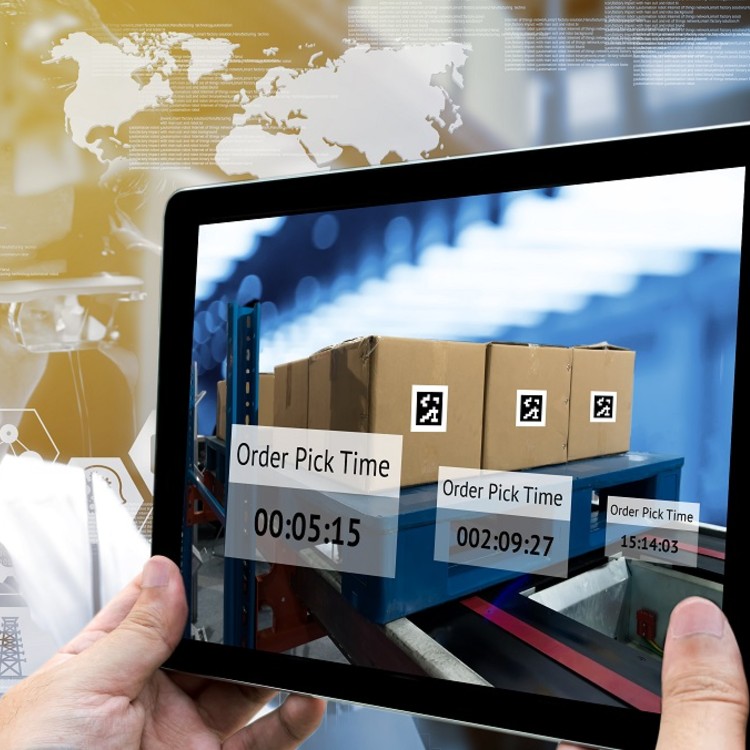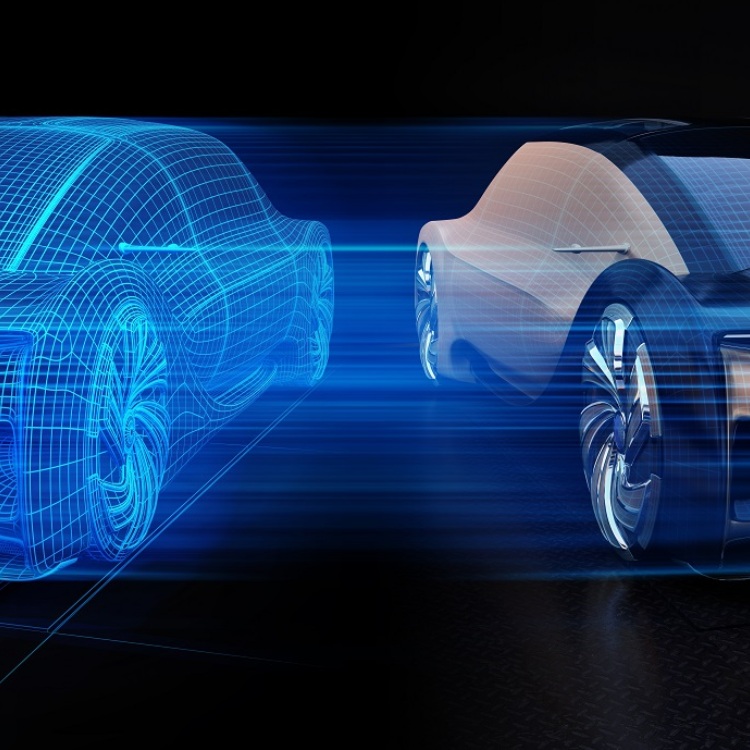The human body is like a factory. A remarkable combination of interconnected systems, processes and production lines. It turns food, air and water into energy. It uses that energy to create zillions of daily thoughts and actions that constitute a happy, healthy and productive life.
Unfortunately, even the most prolific factories sometimes suffer setbacks. Often, it’s a minor maintenance issue. Other times, however, it’s a major malfunction.
The biggest failures — chronic diseases like cancer, multiple sclerosis and dementia — typically are the most difficult to diagnose and repair. With new tools, however, doctors might be able to turn breakdowns into breakthroughs, according to Benedikt von Thuengen, founder of Sanome. The London-based biotech company is using artificial intelligence (AI) to build “digital twins” of patients that can help clinicians detect diseases easier, faster and earlier.
According to von Thuengen, the combination of aging populations, higher disease burdens and rising healthcare costs necessitates a fundamental change in the practice of medicine.
“The future of healthcare needs to be built on early detection of disease — ideally even before any symptoms appear. But that’s easier said than done,” he wrote in an article for Technology Networks.
“The answer could lie in digital twin technology. If we each had a virtual representation of ourselves, including all our organs, in the form of a digital human twin, that virtual ‘being’ could be constantly monitored to detect the very earliest signs of disease and automatically alert the healthcare system, stopping most diseases in their tracks.”
That’s exactly what’s happening in factories and other manufacturing settings, where engineers use digital twins to predict and prevent production errors and failures.
“Digital twins have already been widely deployed in manufacturing for continuous monitoring of equipment and simulation of various scenarios, such as wear and tear or different environments,” von Thuengen continued.
“Complete digital twins of airplane turbines, for example, are continuously fed with real-time sensory data from the actual turbines. This enables much better maintenance planning and can even predict when a turbine is likely to break down.”
If doctors could use the same digital twin technology to analyze their patients’ physiology — marrying data about their medical history, lifestyle and genetics with comprehensive information about diseases and treatments — they might be able to conduct the same preventative maintenance on patients that aerospace engineers perform on airplane turbines.
For a healthcare system that’s struggling to keep pace with patients’ needs, that would be a game-changer.
Manufacturing Better Health
Among those who see the potential in human digital twins is Stefan Wesarg, who coordinates the MED²ICIN project at Germany’s Fraunhofer Institute for Computer Graphics Research IGD.
Launched in 2018, the four-year project has created a prototype of a digital twin for patients inspired by the aforementioned digital twins in manufacturing plants.
“This prototype of a digital patient model marks the start of a new era in patient treatment,” Wesarg said in a statement.
When a machine fails on a factory floor, problems quickly escalate. Assembly lines may grind to a halt, for instance, or finished products might ship with faults that cause them to fail in the field. Managers might have difficulty tracing the issue back to its source when that happens. And without knowing the cause of the problem, they have a hard time fixing it.
Now consider what happens when there’s a digital twin of the factory floor: Because they have a computerized replica that shows exactly how the factory is performing in real time, plant managers can diagnose problems quickly and precisely, said Michael Grieves, executive director of the Digital Twin Institute.
Grieves helped conceive of the manufacturing digital twin about 20 years ago. The premise was simple: A digitally modeled system is comprised of both a physical system and a virtual system, where the latter contains detailed information about the former.
“Right now, we’re in the conceptual stage of digital twins,” Grieves told the American Society of Mechanical Engineers (ASME) in an interview.
“We have this information that we can bring together to create this virtual version of real-world environments based on models and behavioral aspects and modeling and simulation. The next step is to have all this information be pulled together automatically and intelligently, and we’re starting to see that occur.”
Fraunhofer’s MED²ICIN project is helping to pioneer the concept in healthcare by creating a cloud-based platform that ingests a patient’s medical data, then collates it with population-specific disease information.
The result is a holistic digital patient model — a human digital twin — that replicates what’s happening in the body in real time, aids in patient diagnosis, and even models future scenarios to forecast disease progression or predict surgery outcomes.
‘The Best Individualized Treatment’
In 2021 alone, about one-quarter of healthcare executives planned to experiment with a digital twin, according to Accenture.
Along with Fraunhofer, an early adopter was PwC, which in 2016 launched Bodylogical, a scientifically-developed predictive engine that mechanistically simulates the human body and its functions.
“Currently focused on chronic lifestyle diseases, this engine mirrors the body’s own physiological systems — circulatory, respiratory, digestive, endocrine, renal and more — to create a unique model of every unique life,” PwC explained on its website.
“This model is dynamic. If a drug or lifestyle intervention changes one system or even multiple systems, Bodylogical quickly computes the impact on other systems and the body's overall health.”
MED²ICIN does much the same thing. Using it, a doctor can predict the impact of a new medication on a patient by first simulating its effect on the patient’s digital twin. If the cardiovascular drug improves circulation in the digital twin, it likely will improve circulation in the real patient, too.
“After diagnosis, it provides doctors with extensive data to help find the best individualized treatment,” Wesarg said.
The Heart of the Matter
Digital twins exist not only for entire bodies but also for individual organs and even single cells.
The former can be used to develop and test medical devices, according to Wesarg. Take the Living Heart Project, a simulated 3D heart model created by Dassault Systèmes to test potential cardiovascular devices digitally.
According to the World Health Organization, nearly 18 million people die from cardiovascular diseases every year, representing 30% of all global deaths. The American Heart Association, meanwhile, says cardiovascular disease costs the world over $818 billion per year in direct medical costs.
The Living Heart Project could therefore have a real impact on individuals, families and healthcare systems around the world, according to Tina Morrison, who leads regulatory science and innovation for the U.S. Food and Drug Administration (FDA). When it’s complete, she said, the project will streamline the FDA approval of medical devices by reducing the need for animal tests and requiring fewer human test subjects during clinical trials.
“In some cases, in silico clinical trials have already been shown to produce similar results as human clinical trials,” Morrison said in a statement, in which she indicated that the new digital testing process would be more efficient and less expensive than current testing procedures and could accelerate access to new treatments.
In the future, she added, doctors could combine the Living Heart model with an echocardiogram, MRI and CT scan images to better understand the behavior of a patient’s heart without the need for additional invasive diagnostic procedures.
Saving Money and Lives
Although there are still challenges to solve before they become mainstream — concerns about data privacy and patient autonomy loom large, for example — the promise of digital twins in healthcare is plain to see.
As with digital twins of factories in the manufacturing sector, digital twins of humans in the healthcare industry could lead to better, faster and more affordable diagnoses of problems.
There is one significant difference, however: The digital twin healthcare professionals will consult won’t just save money; it also could save lives.






